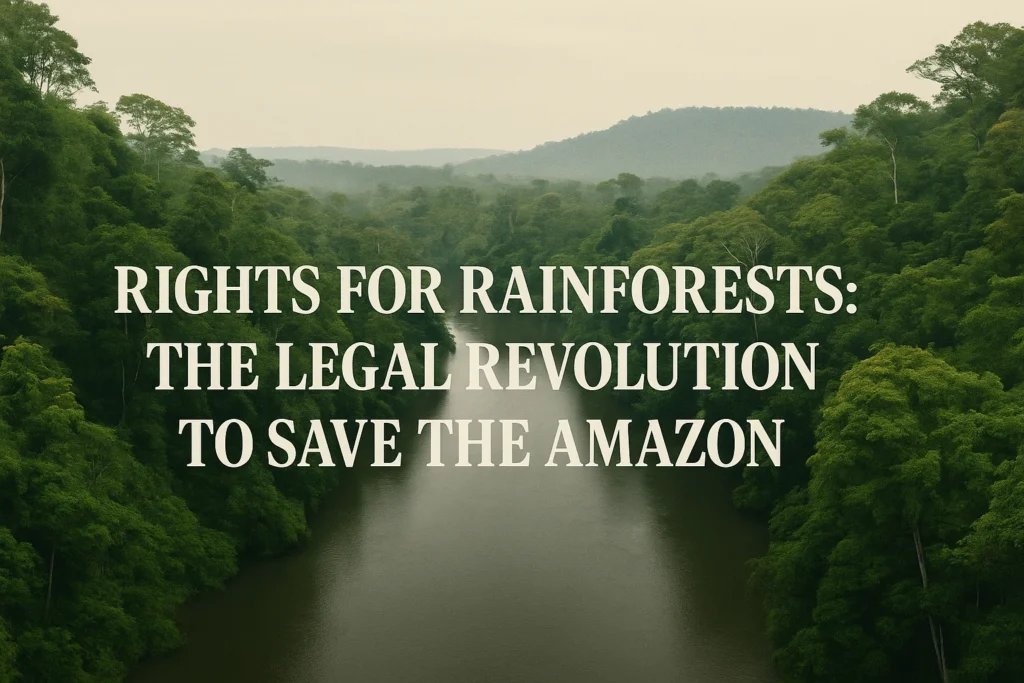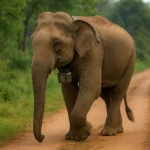The Amazon rainforest, a breathtaking expanse of biodiversity vital to the planet’s health, has long faced an uphill battle against deforestation, illegal mining, and agricultural expansion. For decades, its protection has largely relied on environmental regulations and conservation efforts, often struggling against powerful economic interests. But now, a groundbreaking legal movement is taking root in Brazil, offering a new, powerful weapon in the fight to save this irreplaceable ecosystem: granting nature its own legal rights.
Imagine a world where a river, a forest, or even a specific mountain can stand up in court, having legal “personhood” similar to a human or a corporation. It sounds revolutionary, almost fantastical, but in parts of Brazil, this idea is becoming a tangible reality. This isn’t just about stricter laws; it’s about fundamentally changing how we view and interact with the natural world, recognizing its inherent right to exist, thrive, and be defended in the eyes of the law.
A New Voice for Nature: The Rise of Legal Personhood
The concept of “Rights of Nature” or “environmental personhood” argues that ecosystems and natural entities should not merely be seen as property to be exploited, but as living entities with their own rights, just like people or companies. This idea has been gaining momentum globally, with pioneering examples in countries like Ecuador, which enshrined nature’s rights in its constitution in 2008, and New Zealand, where the Whanganui River was granted legal personhood in 2017.
In Brazil, the movement has been particularly influenced by Indigenous communities, who have long held a profound reverence for the land and its intrinsic value. Their traditional wisdom sees humanity as deeply interconnected with nature, a perspective that aligns perfectly with the principles of environmental personhood. This wisdom is now being translated into legal action.
The Amazon’s First Legal Entities: Rivers Lead the Way
While a single, overarching federal bill granting personhood to the entire Amazon rainforest and river is not yet in place, significant strides have been made at municipal and state levels. A landmark moment occurred in 2023 in the Amazonian municipality of Guajará-Mirim, in the state of Rondônia. Here, the Komi Memem River, a vital tributary within the Amazon basin (known as the Laje River on non-Indigenous maps), was granted legal personhood through a local law.
This groundbreaking legislation was championed by an Indigenous councilman, Francisco Oro Waram, from the Wari’ people. For the Oro Waram and other Indigenous communities, the Komi Memem is not just a water source; it’s a living entity central to their culture, spirituality, and survival. The law designates the Komi Memem and its tributaries as “living entities and subjects of rights,” granting them the right to maintain their natural flow, be nourished by surrounding forests, and exist free from pollution. It also established a guardian committee, including Indigenous representatives, to defend the river’s rights in court.
Since then, other rivers in Brazil, such as the Mosquito River in Minas Gerais and the Vermelho River in Goiás, have also been granted legal personhood, often drawing inspiration from the Komi Memem’s pioneering case. These actions, though localized, set powerful precedents, demonstrating a growing legal shift toward recognizing nature’s inherent rights within the Amazon’s vast territories.
How Legal Personhood Works: Guardians in the Courtroom
So, what does it mean for a river or a forest to have legal “personhood”? It doesn’t mean the river itself will hire a lawyer! Instead, it means that designated guardians or representatives can bring lawsuits on its behalf to protect its interests. These guardians might be Indigenous communities, local residents, environmental organizations, or even government agencies.
For example, if a mining company pollutes a river that has been granted legal personhood, the river’s appointed guardians can sue the company, arguing that the river’s rights to clean water and a healthy ecosystem have been violated. This is a fundamental shift from traditional environmental laws, which often focus on human harm (e.g., impact on property value or public health) or regulatory non-compliance. With legal personhood, the focus shifts to the harm directly inflicted upon nature itself.
This framework allows for:
- Direct Legal Representation: Nature can “speak” in court through its guardians.
- Enforcement of Intrinsic Rights: Beyond regulatory compliance, the law recognizes nature’s right to exist and flourish.
- Preventative Action: Lawsuits can be initiated to prevent potential harm, not just to seek redress after damage has occurred.
This legal innovation provides a new avenue for environmental protection that could be particularly effective in areas as vast and vulnerable as the Amazon.
A Global Movement: Brazil Joins the Vanguard
Brazil’s embrace of environmental personhood is part of a larger global movement. Beyond Ecuador and New Zealand, countries and regions in India, Colombia, Bolivia, and parts of the United States have also recognized similar rights for natural entities. This shared legal evolution reflects a growing international consensus that traditional human-centric legal systems are often inadequate to address the scale of the ecological crisis.
The Amazon, covering over 6.7 million square kilometers across nine South American countries (with about 60% in Brazil), is one of the most biodiverse places on Earth. It is home to millions of species of plants and animals, many yet undiscovered, and plays a crucial role in regulating global climate patterns. Protecting the Amazon is not just a regional issue; it’s a global imperative. The legal personhood movement offers a beacon of hope, demonstrating innovative approaches to safeguard this vital ecosystem.
The Road Ahead: Challenges and Optimism
While the granting of legal personhood to parts of the Amazon is a significant victory, the path forward is not without challenges.
- Enforcement: Translating legal rights into tangible protection requires robust enforcement mechanisms and committed judicial systems.
- Scope: Expanding these rights to encompass larger areas of the Amazon, potentially at a federal level, will require considerable political will and legal innovation.
- Balancing Interests: The movement often faces opposition from industries that benefit from resource extraction, highlighting the ongoing tension between economic development and environmental preservation.
- Defining Guardianship: Clearly defining who can act as a “guardian” for nature, especially across vast and complex ecosystems like the Amazon, can be intricate.
Despite these hurdles, the momentum is undeniable. The success stories of the Komi Memem River and others are inspiring further action. The engagement of Indigenous communities, with their deep ecological knowledge and inherent connection to the land, is proving to be a powerful force in pushing this legal frontier.
The legal revolution to save the Amazon is underway. By granting the rainforest and its rivers legal “rights,” Brazil is not only protecting its natural heritage but also offering a profound new model for how humanity can better coexist with, and truly respect, the living world around us. It’s a bold step, one that offers real hope for the future of our planet’s most vital rainforest.



